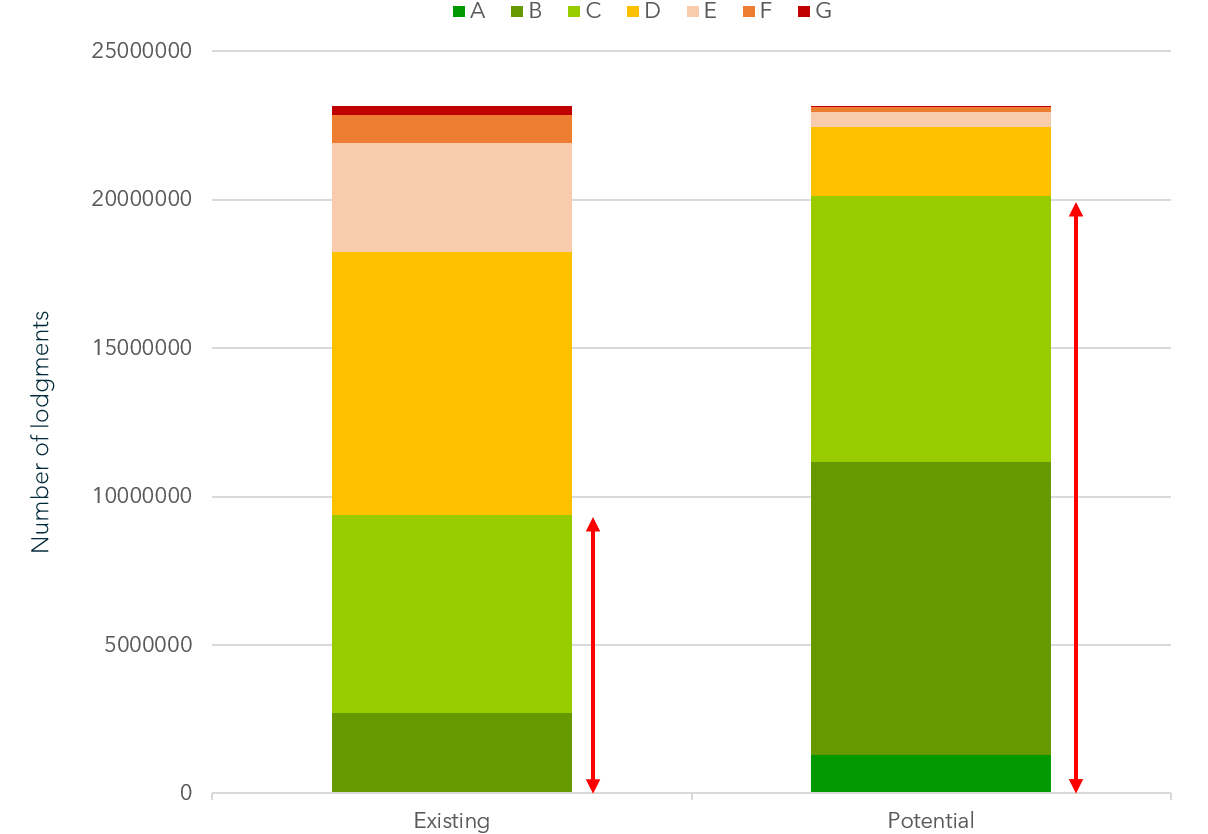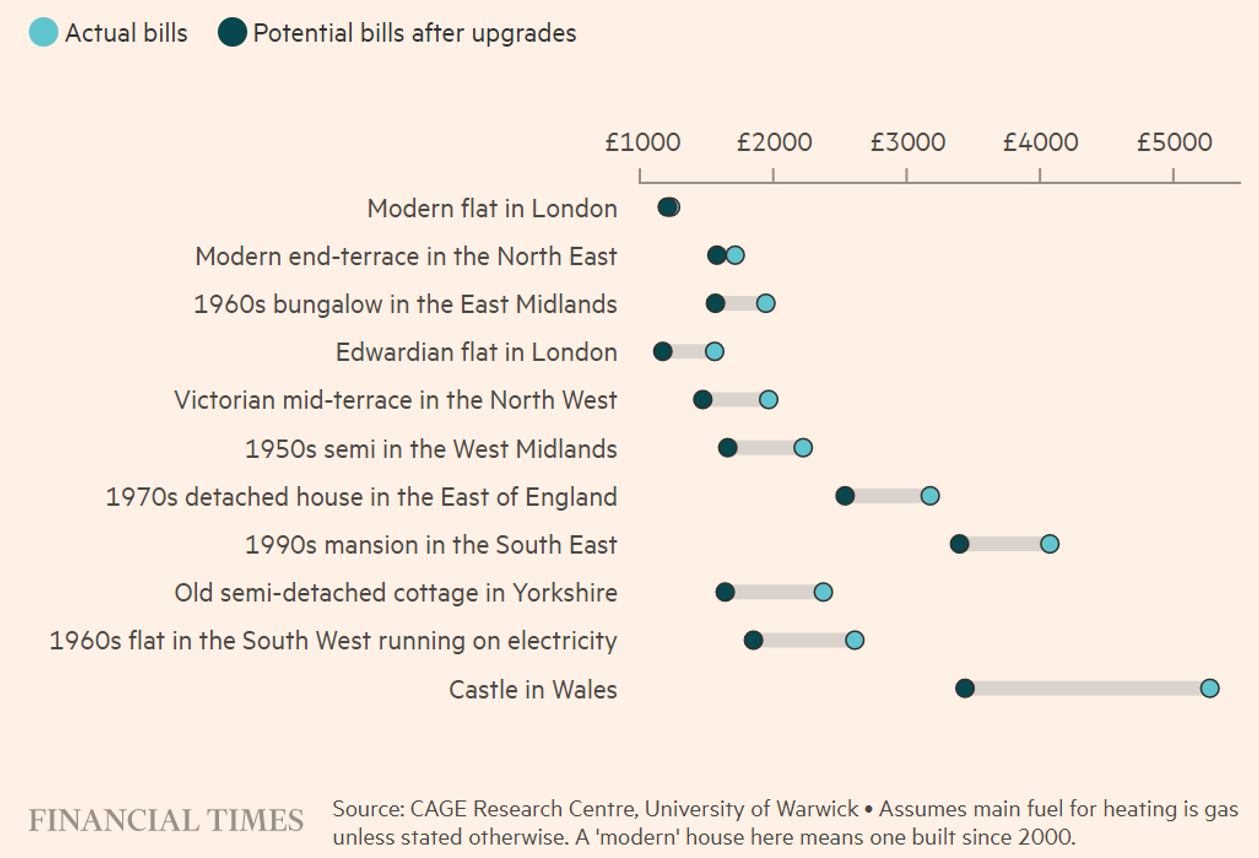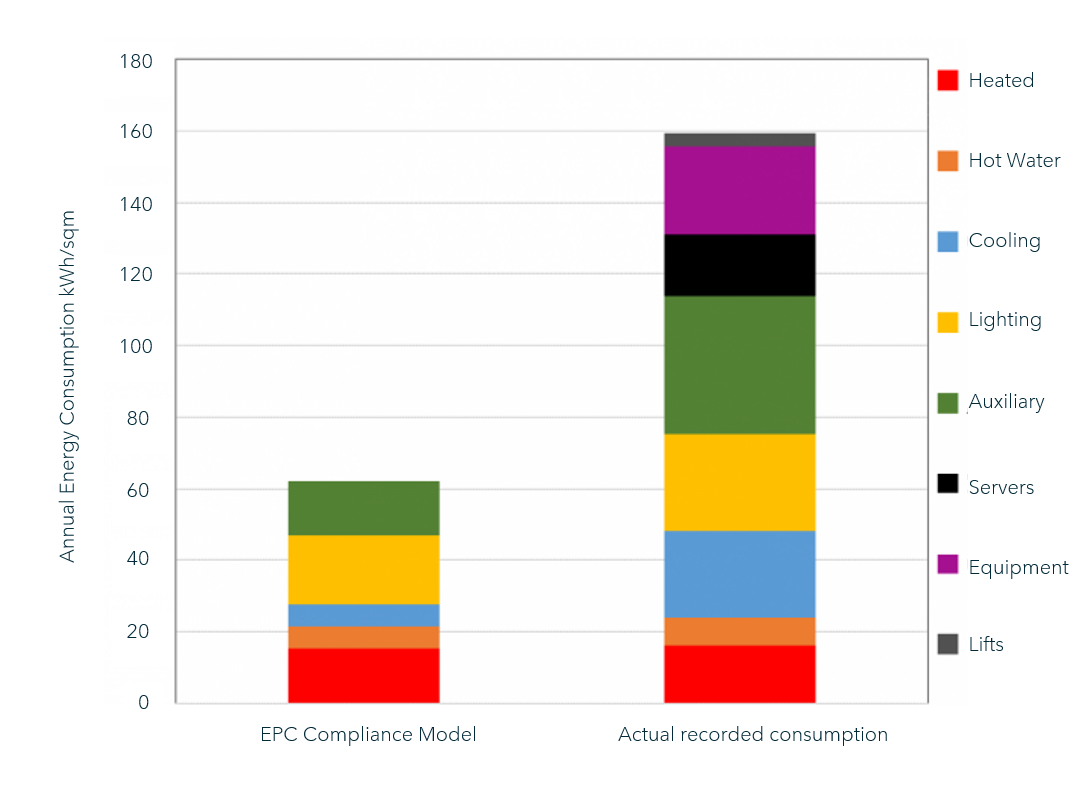EPC Regulation Changes Could Signal Challenges Ahead
The UK has committed to achieving Net Zero by 2050, which will result in significant pressure being applied to the construction industry. The construction industry accounts for 35% of total UK emissions and only 5% comes from new builds, therefore the emphasis for improvement is concentrated on existing buildings. As of now, the main mechanism to address this issue is Part L of the Building Regulations and minimum requirements for EPCs. The government is a ratchet mechanism of increasingly stricter requirements in EPCs to achieve rapid improvements across the building stock over the next 10 years.
Moving Forward with EPCs
As a rough measure of energy efficiency and a standardised rating system which allows us to assess and compare buildings, EPCs are the obvious lever to pull to make the most difference. Currently, the minimum requirement for all buildings is an EPC rating of E, which is two above the lowest rating of a G. However as of 2027, the government is considering measures to increase the minimum to a C rating for homes, and by 2030 to a B for commercial buildings.

We recently carried out a study on all of the publicly available domestic EPC data as we wanted to understand how far away the current building stock is from reaching these future targets. We analysed over 23 million domestic EPCs lodged for 340 boroughs in England in Wales as of September 2022. The analysis shows that a typical dwelling has an EPC rating of D. We found that by implementing the typical improvement measures included the EPC Recommendation Reports the potential EPC rating of a typical dwelling could achieve a B rating. The results below illustrate what this would achieve if applied to 23 million dwellings in the current building stock.

All the improvements utilised for this study were standard energy efficiency measures. Naturally, lighting, fabric and heating systems upgrades had the largest improvement. Our study assumes that all energy efficiency measures deemed technically feasible are implemented, in reality, some of the measures would result in long payback periods (i.e. greater than 15 years) which would not be considered economically viable.
Energy and Cost Efficiencies
The current context of inflated and unpredictable fuel prices should also be considered in the viability of these measures. The table below shows the standard prices used in a current EPC model and the current market prices, naturally this substantial cost differential has a major impact on the payback periods from making these improvements. In the current context, the likely cost savings stated in your EPC Recommendation Report are likely to be at least double.
Gas | Electricity | |
|---|---|---|
Part L 2022 | 3.64 p/kWh | 16.49 p/kWh |
Current market | 10.3 p/kWh | 34 p/kWh |
The economic viability is also heavily dependent on the existing condition of the dwelling. The UK has the largest proportion of older buildings of any country in Europe. Typically, the older the building the more favourable the cost–benefit analysis looks, as highlighted by a recent study from the University of Warwick published by the Financial Times.

This presents an economic opportunity for the UK, as providing the material and labour costs of these retrofitting measures don’t increase significantly, the combination of inflated energy prices and an old building stock means there is approximately £10 to 20 billion in energy savings per annum available to homeowners.
How To Get Ahead
The combination of impending tightening of EPC standards and inflated energy prices for the foreseeable future means all property owners should be moving quickly to take advantage of the situation, here are our 6 top tips to get ahead with your EPCs:
1. Case by Case Approach
Understanding the context of the building is crucial. Factors such as heritage value, the existing condition of the building, regulatory requirements etc. need to be considered prior to suggesting improvement measures. Finding the energy hot spots in each type of building is key.

For example, when upgrading performance in a residential scheme targeting space heating would provide much more value, whereas retrofitting lighting in retail spaces would provide more significant gains.
2. Energy Audits

Typically, actual consumption is found to be twice or more the compliance estimation shown by EDSL. This is because the assumptions in an EPC model assume a less intensive usage of the building. Moreover, compliance models omit significant areas of consumption such as unplugged devices/ appliances (small power) lifts and external lighting etc. When carrying out EPCs, it is common for energy assessors to use default values for the model inputs they do not know or were unable to confirm on site. This impacts the modelled performance significantly as in some cases it will provide an inaccurate picture of the building’s performance. To resolve this undertake an Energy Audit when the building is occupied to ascertain to determine real life consumption.
3. Understand Correlations Between Measures
Measures are often interrelated, and this does not always get captured in simplified energy models. For example, having high air leakage in the building will impact performance of the mechanical ventilation system as well as the heating system. Therefore, it is recommended that fabric improvement measures be undertaken to improve air tightness in conjunction with introduction of MVHR or a heat pump system. Similarly, relacing existing single glazing with new double-glazed windows should be done alongside draft proofing to avoid condensation and ensure lower heating demand. Neglecting design fundamental in the installation can actually worsen the building’s performance. For instance, improving air tightness without incorporating controlled ventilation can lead to issues like dampness, mould, and rot.
4. Assess Applicability
There are many things to consider and a well thought out strategy is required to find the most balanced outcome. Retrofitting comes with multiple challenges and the implications of each must be analysed:
Fabric upgrade considerations:
- Condensation risk
- Heritage value
- Internal area/ height reduction
Window upgrade considerations:
- Heritage value leading to higher costs
- Replicas not often as efficient as market standards for new windows
Services replacement considerations:
- Limited space for new ducts and pipework
- Replacement of existing systems can be costly and highly disruptive
Renewables considerations:
- Limited roof space for solar panels
- Heritage requirements and/or noise limits options
5. Cost Benefit Analysis
‘Fabric first’ has been the mantra for a while but there is a need to consider the changing backdrop of technology cost and grid decarbonisation. We must remember the circumstances change and the variables are dynamic. Under certain conditions you may find that the convention rules of thumb aren’t the case; sometimes installing an air source heat pump might be better value for money than installing external wall insulation as shown with the 3-bedroom semi-detached UK house example by Richard Erskine.

6. Planning for Execution
It is critical to have a medium to long term plan based on the budget and applicability of the building. It may not be possible to carry out all the improvements at the same time, therefore, upgrades that can provide the best performance improvements, in combination, for the available funds should be prioritised. For example, an intermediate fabric upgrade now to lower energy demand and a switch from gas boiler to electric heat pump in the future once the economic life of the current system is reached. Approaching the challenge with a long-term mindset and being aware of how measures complement each other, the impact of regulations and cost of technologies avoids the risk of making incompatible improvements.
Beyond EPCs
Although minimum EPCs ratings are mandated, there are limitations to this methodology that should be considered. EPCs are based on standardised inputs that don’t reflect real-life energy usage. The fuel cost factors which influence the EPC rating are only updated when a new version of the Standard Assessment Procedure (SAP) is introduced, which does not accurately reflect the current situation. The BRE’s Product Characteristics Database (PCDB) contains data relating to heating systems, controls etc, which includes the cost of fuel that is used to calculate the estimated energy costs and savings that will appear on the EPC. Typically it is updated every 6 months and is based on a rolling average of the last 3 years’ fuel prices. However, due to the ongoing energy crisis, the fuel costs within the PCDB are now considered inaccurate. In acknowledgement of this, updates have been made to the fuel prices as of 15th of February onwards (see below), which demonstrates the significant rise in energy costs and potential savings from retrofitting existing properties highlighted by elmhurst energy.
January 2023 | 15th February onwards | |
|---|---|---|
Estimated yearly energy cost for this property | £1045 | £2163 |
Potential savings | £191 | £427 |
Energy Rating | D66 | D66 |
The use of outdated carbon factors, and improper energy prices and capital costs for recommendations and payback calculations, highlights that it is not a complete measurement tool. No matter how much you try to correctly capture these dynamic changes and establish general rules, they are consistently moving and so we always need to provide a ‘real life’ sense check in every assessment.
It is also important to go beyond measurements of reducing energy consumption and consider how to use improvement measures to improve occupant health and to balance both operational and embodied emissions – this concept is the essence of good sustainability.
EPC ratings are a system that is continuously evolving and despite the criticisms above, they are a proven and valuable way to measure energy performance in buildings across the country. The limitations provided only highlight how important it is to look beyond EPCs and a utilise a more in-depth approach, as this is often where the added value lies for any building owner.
Rishika Shroff, Building Performance Manager
Rishika is a Building Performance Manager with an architectural background that enables her to work with design teams and create solutions that can enhance performance while maintaining coherence with their creative ideology. Rishika has extensive experience specialising in dynamic modelling of buildings to provide advice in relation to energy consumption, carbon emissions, thermal comfort, overheating and daylighting. She also undertakes SAP and SBEM modelling for projects as well as microclimate assessments for numerous landscape and urban design projects in Asia and Europe. Rishika has previously worked in architecture and sustainability consulting in India and London, and is an accredited Indian Green Building Council professional.





